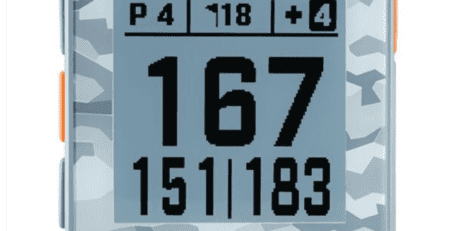Lower Your Handicap Now: 27 Instant Improvements for Better Scores
Golf is a game of constant improvement, and one of the key metrics used to gauge a golfer’s skill level is their handicap. The handicap represents the golfer’s ability to play the game relative to par. Lowering your handicap not only reflects your progress and dedication to the sport but also opens up new opportunities to compete at higher levels and enjoy a more fulfilling golfing experience. Whether you’re a seasoned golfer or just starting your golfing journey, working on lowering your handicap is a goal worth pursuing.
1 Evaluating strengths and weaknesses in your golf game
Before embarking on a journey to lower your handicap, it’s crucial to assess your current golf game. Take some time to objectively evaluate your strengths and weaknesses. Consider aspects such as your driving accuracy, iron play, short game skills, putting proficiency, and course management abilities. Identifying your strong suits will allow you to leverage them, while acknowledging your weaknesses will help you prioritise areas for improvement.
2 Understanding key statistics and metrics to track progress
To effectively measure your progress and identify areas that need attention, it’s important to understand and track key statistics and metrics. Keep track of fairways hit, greens in regulation, putts per round, up-and-down percentage, and sand save percentage. These statistics provide valuable insights into your performance and highlight specific areas that require improvement.
3 Identifying areas for improvement to target for lowering your handicap
Based on your self-assessment and statistical analysis, pinpoint the areas of your game that need the most attention. It could be improving your accuracy off the tee, sharpening your short game skills, or enhancing your putting consistency. By identifying these areas, you can focus your practice and training efforts on the aspects that will have the most significant impact on lowering your handicap.
4 Importance of strategic shot selection and course navigation
One of the keys to lowering your handicap is mastering the art of course management. It’s not just about hitting impressive shots; it’s about making smart decisions that maximise your chances of success. Understanding the layout of the course, its challenges, and the optimal routes to the green can significantly impact your scores. By strategically selecting shots and navigating the course with a game plan, you can avoid unnecessary risks and set yourself up for better scoring opportunities.
5 Tips for assessing risk and reward on each hole
Every hole presents its own set of challenges and opportunities. Learning to assess the risk and reward associated with different shot options is essential for effective course management. Evaluate factors such as distance, wind conditions, hazards, and pin placement to determine the optimal shot selection. Sometimes playing a safe, conservative shot to set up a better approach may be more beneficial than taking a high-risk shot with a potentially low payoff. Develop a decision-making process that considers these factors to make more informed choices during your rounds.
6 Strategies for managing hazards and avoiding costly mistakes
Hazardous areas on the golf course can quickly derail your round and inflate your scores. Developing strategies to effectively manage hazards is crucial for lowering your handicap. This could involve playing more conservatively around water hazards or bunkers, utilizing lay-up shots to avoid trouble, or taking a penalty stroke when necessary to prevent a disastrous outcome. By minimizing costly mistakes and strategically navigating hazards, you can keep your scores in check and improve your chances of achieving better results.
7 Techniques for better alignment and setup
Driving accuracy is essential for lowering your handicap, as hitting fairways consistently sets you up for more manageable approach shots. Improving your alignment and setup can have a significant impact on your driving performance. Ensure that your feet, hips, and shoulders are properly aligned with the target line. Maintain a square stance and position the ball correctly in your stance to promote a clean contact. Additionally, work on your posture and grip to optimise your swing mechanics and improve your chances of hitting the fairway.
8 Tips for generating more power and distance off the tee
While accuracy is crucial, increasing your driving distance can also give you an advantage on the course. By incorporating certain techniques, you can generate more power and distance off the tee. Focus on building a strong and stable base by utilizing your lower body in the swing. Engage your hips and legs to initiate the downswing and transfer energy efficiently through the impact zone. Additionally, work on maintaining a smooth and controlled tempo throughout your swing to optimise power and maintain accuracy.
9 Strategies for finding fairways consistently and avoiding trouble
Consistency off the tee is vital for lowering your handicap. Developing strategies that help you find fairways consistently and avoid trouble can make a significant difference in your scores. Evaluate the layout of the hole and identify the best target areas to aim for. This might involve clubbing down to increase accuracy or adjusting your shot shape to accommodate the hole’s shape and hazards. Additionally, consider playing more conservatively on tight or challenging holes to minimise the risk of errant shots. By focusing on hitting the fairway and avoiding trouble, you can set yourself up for better scoring opportunities and lower your handicap.
Improving driving accuracy and distance is a key aspect of lowering your handicap. By refining your alignment and setup, generating more power and distance, and employing strategic strategies to find fairways consistently, you can enhance your driving performance and gain an advantage on the course. Remember, a combination of accuracy and distance off the tee will significantly improve your overall game and contribute to better scores.
10 Techniques for better ball striking and accuracy with irons
Approach shots are critical for scoring well and lowering your handicap. Improving your ball striking and accuracy with irons can lead to more precise shots into the green. Focus on proper alignment and setup to ensure a consistent swing path and clubface position at impact. Practice a controlled and smooth tempo to promote solid contact with the ball. Additionally, work on maintaining a downward strike and compressing the ball for optimal distance and accuracy.
11 Tips for distance control and hitting greens in regulation
Distance control is key for approach shots, as it allows you to give yourself good birdie opportunities and avoid costly mistakes. Develop a consistent and repeatable swing tempo to control your distances more effectively. Practice with different clubs to learn the average carry distances for each, which will help you make better club selections on the course. Focus on hitting the green in regulation, aiming for the centre or larger portions of the green to increase your chances of avoiding hazards and securing par or better.
12 Strategies for targeting pin positions and avoiding high-risk shots
Choosing the right target and avoiding high-risk shots can significantly improve your approach shot performance. Assess the pin position and take into account any hazards or trouble areas surrounding the green. Adjust your target accordingly, aiming for areas that provide a larger margin for error. Consider playing to the safe side of the pin rather than going for a difficult shot that could lead to a higher score. By adopting a strategic approach and making calculated decisions, you can increase your chances of hitting more accurate approach shots and lowering your handicap.
13 Techniques for improved chipping and pitching around the green
The short game can make or break your scores, so it’s essential to hone your chipping and pitching skills. Practice a variety of shots, including bump-and-run, flop shots, and high pitches, to develop versatility around the greens. Focus on proper club selection, ball position, and a controlled swing to ensure consistent contact and distance control. Work on generating backspin and landing the ball softly to give yourself better opportunities for one-putts.
14 Tips for developing touch and feel with wedges
Developing touch and feel with wedges is crucial for precise distance control and scoring well. Spend time practicing different wedge shots from varying distances, focusing on developing a consistent swing tempo and rhythm. Experiment with different grip pressures and practice hitting shots with softer and firmer swings to get a sense of how the ball reacts.
15 Strategies for mastering bunker shots and saving strokes
Bunker shots can be intimidating, but with the right strategies, you can become more confident and proficient at getting out of the sand. Practice various bunker shots, including different lies and distances, to understand how the sand affects the ball’s trajectory. Focus on hitting behind the ball and allowing the sand to lift it out smoothly. Develop a consistent technique for generating enough speed and controlling the distance. Practice different bunker shot scenarios, such as longer or shorter shots, to become comfortable and effective in saving strokes from the sand.
Mastering your short game skills is crucial for improving your scores and lowering your handicap. By focusing on improved chipping and pitching techniques, developing touch and feel with wedges, and mastering bunker shots, you can become more proficient around the greens. Dedicate regular practice time to these areas of your game, and implement strategic approaches on the course to save strokes and improve your overall performance.
16 Techniques for better green reading and alignment
Green reading and alignment are crucial aspects of putting that can greatly improve your ability to hole more putts. Take the time to study the contours of the green, paying attention to slopes, breaks, and the grain of the grass. Develop a systematic approach to reading greens, such as starting from behind the ball and visualizing the intended line. Use alignment aids, such as a putter’s alignment markings or a line on the ball, to ensure your putter face is square to the intended target line.
17 Tips for developing a consistent putting stroke
Consistency in your putting stroke is essential for improved accuracy and distance control. Focus on a pendulum-like motion, allowing your shoulders and arms to work together in a smooth and rhythmic manner. Practice maintaining a steady head and a stable lower body to promote a consistent stroke. Experiment with different grip styles and hand positions to find what feels most comfortable and natural for you. Develop a pre-shot routine that helps you set up consistently and promotes a relaxed and confident putting stroke.
18 Strategies for improving distance control and holing more putts
Distance control is crucial for holing more putts and reducing three-putts. Develop a good sense of the speed of the greens by practicing lag putts from various distances. Pay attention to the length of your backswing and the acceleration through the ball to fine-tune your distance control. Practice different length putts to become comfortable with a variety of distances. Additionally, work on your mental approach to putting, visualizing successful putts and developing a positive mindset to build confidence and increase your chances of holing more putts.
19 Importance of a confident and focused mindset
The mental aspect of golf plays a significant role in lowering your handicap. Developing a confident and focused mindset can positively impact your performance on the course. Cultivate a belief in your abilities and trust your swing. Visualise successful shots and approach each shot with a positive mindset. Practice mindfulness and deep breathing techniques to stay present and avoid getting distracted by negative thoughts or external pressures.
20 Strategies for managing pressure and staying composed on the course
Golf can be a mentally demanding sport, especially when facing high-pressure situations. Implement strategies to manage pressure effectively and stay composed. Create a pre-shot routine that helps you relax and refocus before each shot. Break the round into smaller, manageable segments to avoid feeling overwhelmed. Maintain realistic expectations and embrace the process of improvement rather than being solely focused on the outcome. Utilise mental imagery techniques to visualise successful shots and reinforce positive emotions during challenging moments.
21 Tips for maintaining a positive attitude and overcoming setbacks
Golf is a game of highs and lows, and how you handle setbacks can greatly impact your overall performance. Develop resilience and maintain a positive attitude in the face of challenges. Embrace mistakes as learning opportunities and avoid dwelling on past shots. Stay committed to your game plan and make adjustments as necessary. Focus on the present moment and avoid getting caught up in the outcome of previous holes or shots. Surround yourself with supportive and positive individuals who can help uplift your spirits and provide encouragement during difficult times.
By nurturing a confident and focused mindset, managing pressure effectively, and maintaining a positive attitude, you can enhance your mental game and improve your course management. Remember that golf is as much a mental challenge as it is a physical one, and investing time and effort into developing your mental skills can lead to lower scores and a reduced handicap.
22 Importance of structured and focused practice sessions
Practicing with purpose is key to making significant improvements in your golf game. Randomly hitting balls on the driving range may not yield the desired results. Emphasise the importance of structured and focused practice sessions. Set specific goals for each practice session, whether it’s working on a particular aspect of your game or mastering a specific shot. By setting clear objectives, you can maximise the effectiveness of your practice time and make targeted improvements.
23 Tips for efficient and effective practice routines
To practice efficiently and effectively, it’s essential to optimise your practice routines. Start by warming up your body and mind before diving into practice. Focus on quality over quantity, ensuring that each repetition is purposeful and deliberate. Vary your practice drills and exercises to simulate on-course situations and challenge different aspects of your game. Incorporate feedback mechanisms such as video analysis or training aids to enhance your understanding of technique and make necessary adjustments.
24 Strategies for simulating on-course situations during practice
Practicing in a controlled environment is valuable, but to truly lower your handicap, it’s important to simulate on-course situations during practice. Create scenarios that replicate the challenges you encounter during a round of golf. Practice different lies, slopes, and distances to develop adaptability and problem-solving skills. Incorporate pressure into your practice by setting performance goals or competing against friends or practice partners. By practicing under simulated game conditions, you can better transfer your skills to the course and perform at your best when it matters.
By practicing with purpose, implementing efficient and effective practice routines, and simulating on-course situations, you can take your game to the next level. Remember that deliberate practice, combined with a growth mindset, is the key to continuous improvement. Stay disciplined, stay focused, and reap the rewards of your dedicated practice efforts.
25 Importance of monitoring your performance and tracking progress
Tracking your performance and progress is essential for lowering your handicap. It provides valuable insights into your strengths, weaknesses, and areas that need improvement. By keeping a record of your scores, fairways hit, greens in regulation, and other relevant statistics, you can identify patterns, track trends, and measure your progress over time. This data-driven approach enables you to make informed decisions about where to focus your practice efforts and identify areas where you’ve made significant improvements.
26 Tips for setting specific and achievable goals to lower your handicap
Setting goals is crucial for staying motivated and maintaining a clear direction in your golf journey. When it comes to lowering your handicap, set specific and measurable goals that align with your skill level and time frame. Break down your long-term goal into smaller, achievable milestones. For example, improving your handicap by a certain number of strokes within a specified period. Additionally, make sure your goals are realistic and challenging enough to push you out of your comfort zone but still attainable with dedicated practice and effort.
27 Strategies for staying motivated and celebrating milestones
Lowering your handicap requires consistency and perseverance, which can sometimes be challenging. To stay motivated, find ways to keep the process enjoyable and rewarding. Celebrate your milestones along the way, whether it’s achieving a specific handicap target, hitting a personal best score, or mastering a challenging shot. Recognise your progress and give yourself credit for the hard work you’ve put in. Surround yourself with a supportive golfing community or join competitions and leagues that provide additional motivation and a sense of camaraderie.
In conclusion, lowering your handicap requires a multifaceted approach that encompasses various aspects of your golf game. By implementing the strategies and tips outlined in this article, you can make instant improvements and work towards better scores.
Lowering your handicap is an ongoing pursuit that will continuously challenge and reward you. Embrace the opportunities for growth and improvement, and let your passion for the game drive you towards better scores. With dedication, perseverance, and a commitment to continuous learning, you can achieve your goal of lowering your handicap and experience the joy of playing your best golf. So, lace up your golf shoes, grab your clubs, and get ready to embark on an exciting journey towards better scores and improved performance on the course.











